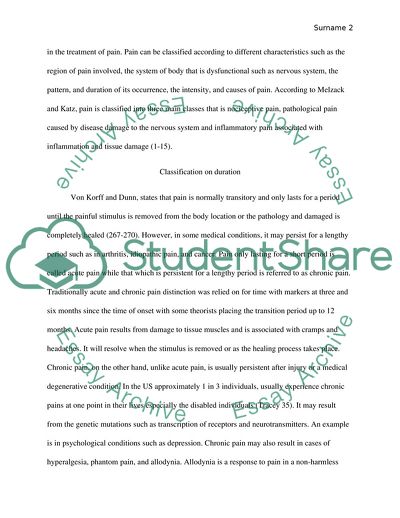Cite this document
(Current and Historical Pain Definition and Treatment Coursework Example | Topics and Well Written Essays - 2000 words, n.d.)
Current and Historical Pain Definition and Treatment Coursework Example | Topics and Well Written Essays - 2000 words. https://studentshare.org/health-sciences-medicine/1858635-pain-definition-and-treatments-current-and-historical
Current and Historical Pain Definition and Treatment Coursework Example | Topics and Well Written Essays - 2000 words. https://studentshare.org/health-sciences-medicine/1858635-pain-definition-and-treatments-current-and-historical
(Current and Historical Pain Definition and Treatment Coursework Example | Topics and Well Written Essays - 2000 Words)
Current and Historical Pain Definition and Treatment Coursework Example | Topics and Well Written Essays - 2000 Words. https://studentshare.org/health-sciences-medicine/1858635-pain-definition-and-treatments-current-and-historical.
Current and Historical Pain Definition and Treatment Coursework Example | Topics and Well Written Essays - 2000 Words. https://studentshare.org/health-sciences-medicine/1858635-pain-definition-and-treatments-current-and-historical.
“Current and Historical Pain Definition and Treatment Coursework Example | Topics and Well Written Essays - 2000 Words”. https://studentshare.org/health-sciences-medicine/1858635-pain-definition-and-treatments-current-and-historical.


